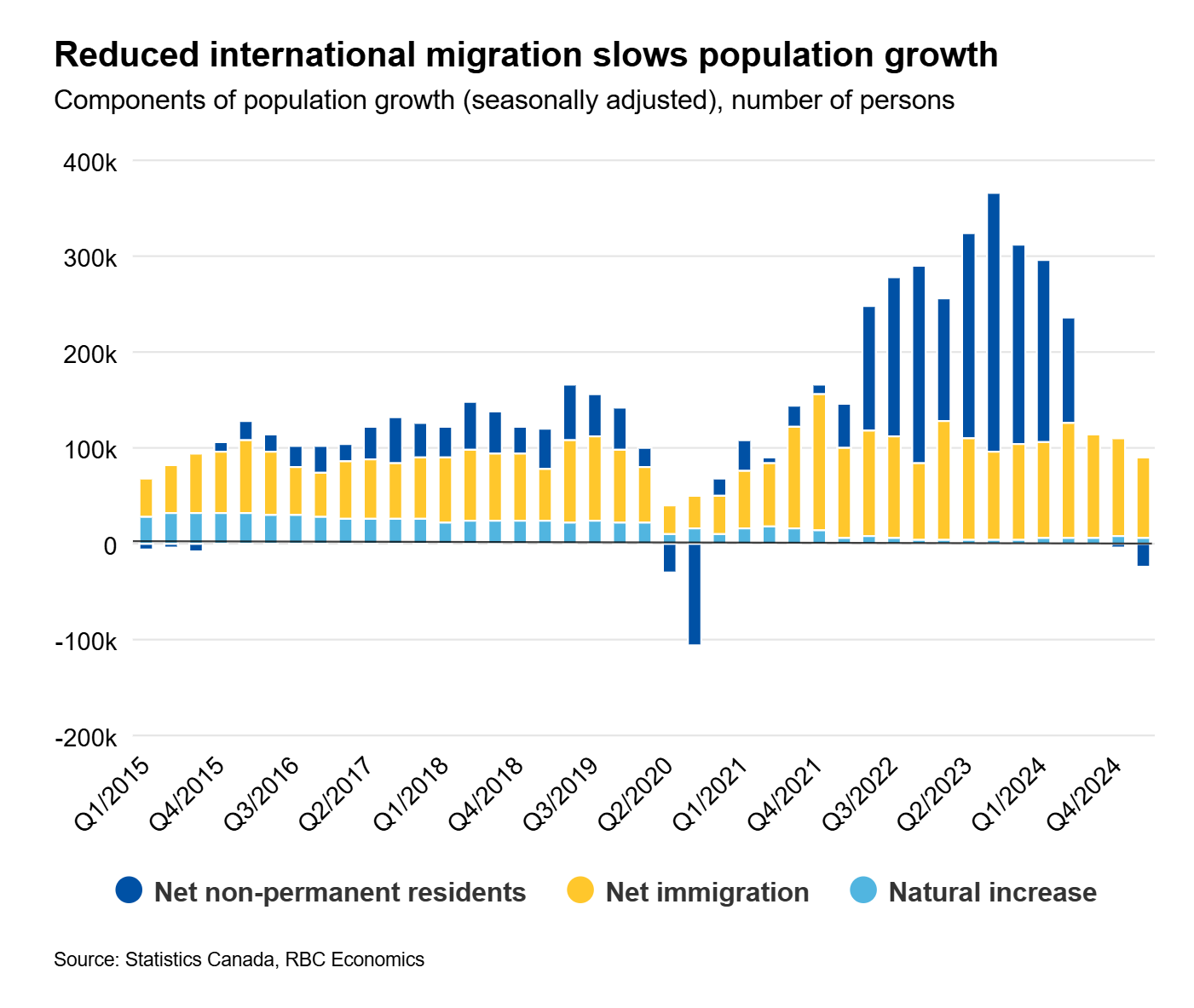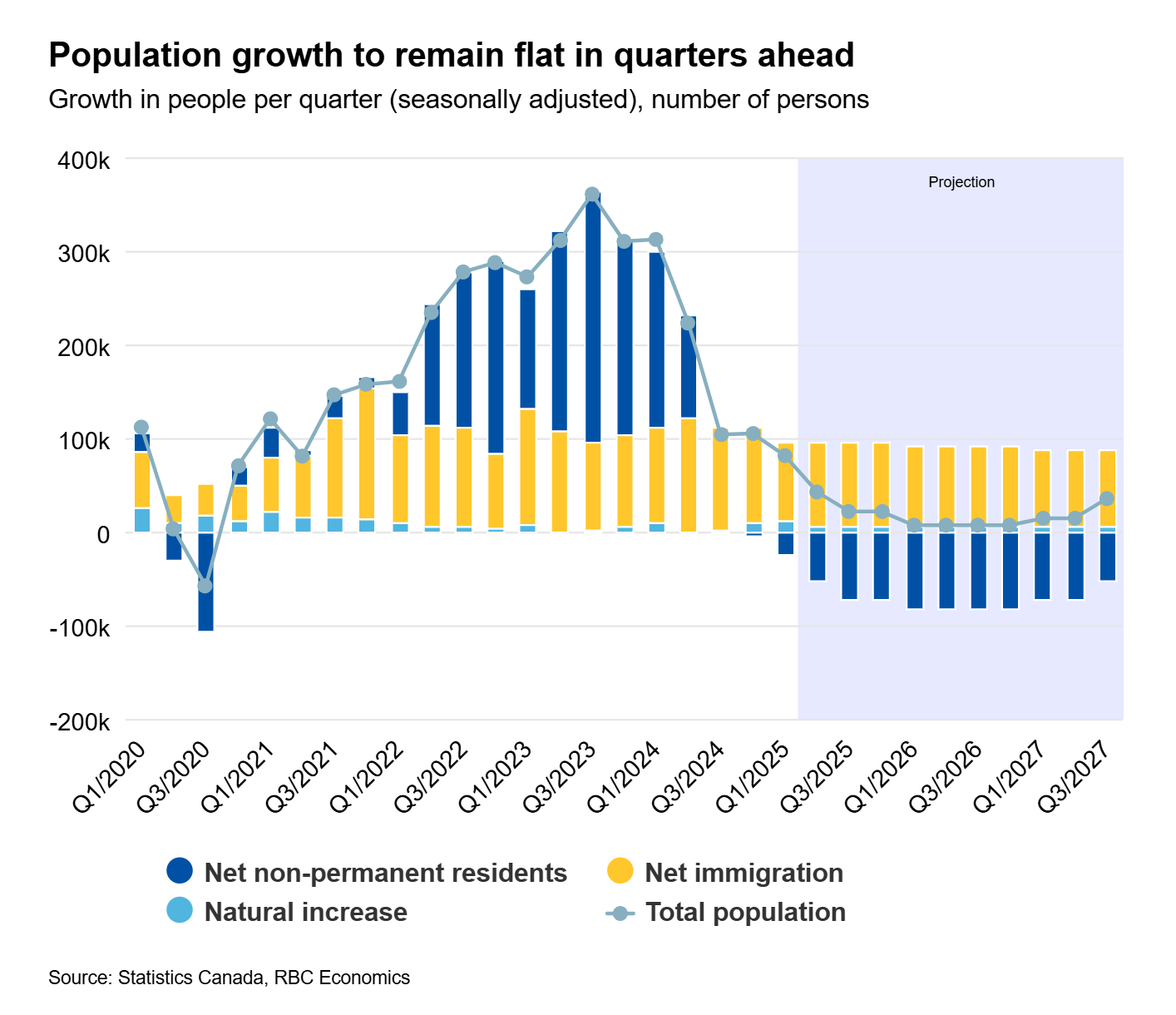Canada immigration, full throttle or zero growth?
Cut through the noise to see the numbers
In 2024, Prime Minister Trudeau announced a major change to Canada’s immigration policy, sharply cutting the target number and to pause population growth. He admits the recent influx of immigrants has stranded housing and social services. The provinces need time to catch up.
The change creates a lot of confusing news headlines. Some say Canada freezes immigration, a very different message than the 20% reduction from the officials. Latest news says Canada achieved almost zero growth in the 2nd quarter. Can anyone immigrate to Canada anymore today?
To clear up facts from confusions, I find RBC’s statistics most useful. The chart below shows 10 years of quarterly population change, broken down to the three components – natural growth, net immigration, and net non-permanent residents. After the COVID pause in 2020, there is a substantial jump in population growth. This is mainly made up of non-permanent residents, mostly as international students. This jump is what causes stress and government reaction.
In a stable world, the net non-permanent residents number should be near zero. This does not mean no new people coming in. But they are offset by the exit of the same number of people from a few years. The large number of net non-permanent residence jumps means the inflow has increased substantially over the outflow, breaking the stable circulation. Non-permanent residents now make up a larger portion of the population of about 7.1%.
Nevertheless, these increases are by definition non-permanent (assuming they eventually leave). If increasing inflow causes population increase, then throttling the inflow to under the outflow will drain the population. This is just what happened. Indeed, Canada achieved near zero population growth by engineering and net outflow of non-permanent residents, probably by curbing the student permits. Even this outflow is short term. Once the influx from around 2022 is drained, the inflow and outflow should return to balance.
When we think of moving to Canada, we are thinking of permanent immigration rather than short term study. The net immigration target has also reduced by 20%. But it is definitely not zero. The door to Canada is not closed. Quite the contrary, after the reduction from the 2022 peak, immigration is still higher than 10 years ago. The immigration target in 2026 is 380,000, or 0.9% of the population. This growth rate is still high, on par with high growth countries like India.
Zero population growth is a news gimmick, a temporary state that does not reflect the long term plan. A better way to describe Canada’s policy is a correction to the post COVID aggressive growth, dialing back to a more sustainable but still high level of growth.
This is a cautionary tale to other countries. Aggressive change causes social stress and backlash. Rather than making abrupt starts and stops, it would have been better to pursue a more sustainable target. In the long run, the destiny is clear. It will be a world of immigrants and multiculturalism. It is best to find a smooth and steady path toward there.




If you are interested in cutting through the catchy news headline and get down to facts and numbers, I highly recommend USAFacts (https://usafacts.org/). The US government publish mountains of data. Steve Ballmer created USAFacts to highlight them and link them to current affairs.